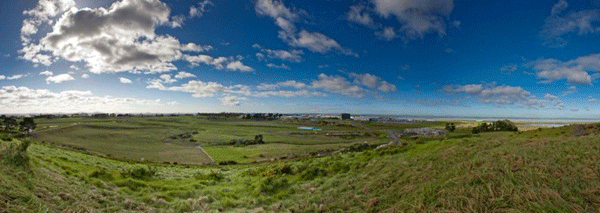27 March 2013
A special bird-deterring grass that has been trialled at Auckland, Hamilton and Christchurch airports is now ready to be shown off to the world.
In April 2011, 27 acres of land on the southern side of Auckland airport’s runway were sown with the grass, which was designed in Canterbury and contains an endophyte that naturally deters wildlife and insects.
The endophyte is a natural fungus that grows between plant cells in many ryegrasses and tall fescues that makes them unpalatable to both insects and animals without harming them. The trials at the three New Zealand airports have shown that the grass lowered bird numbers by 95 per cent, something that will be welcome news to the aviation industry, which spends around US$1.2 billion on aircraft damage and deterrence measures due to bird strikes.
The grass is the only one of its kind in the world at the moment and is one of the few permanent deterrents that can be used at the airport. AgResearch subsidiary Grasslanz owns the patents for the technology and PGG Wrightson has the rights to market it in New Zealand and around the world.
A roving technical conference last month took a group of about 40 airport consultants and managers as well as turf agronomists from around the world to the three trial airports so they could see the grass in different environments and speak to those involved in developing the technology.
The grass could be a strong part of a multifaceted plan to prevent birdstrike at airports and it also could be used in parks and sports fields.
